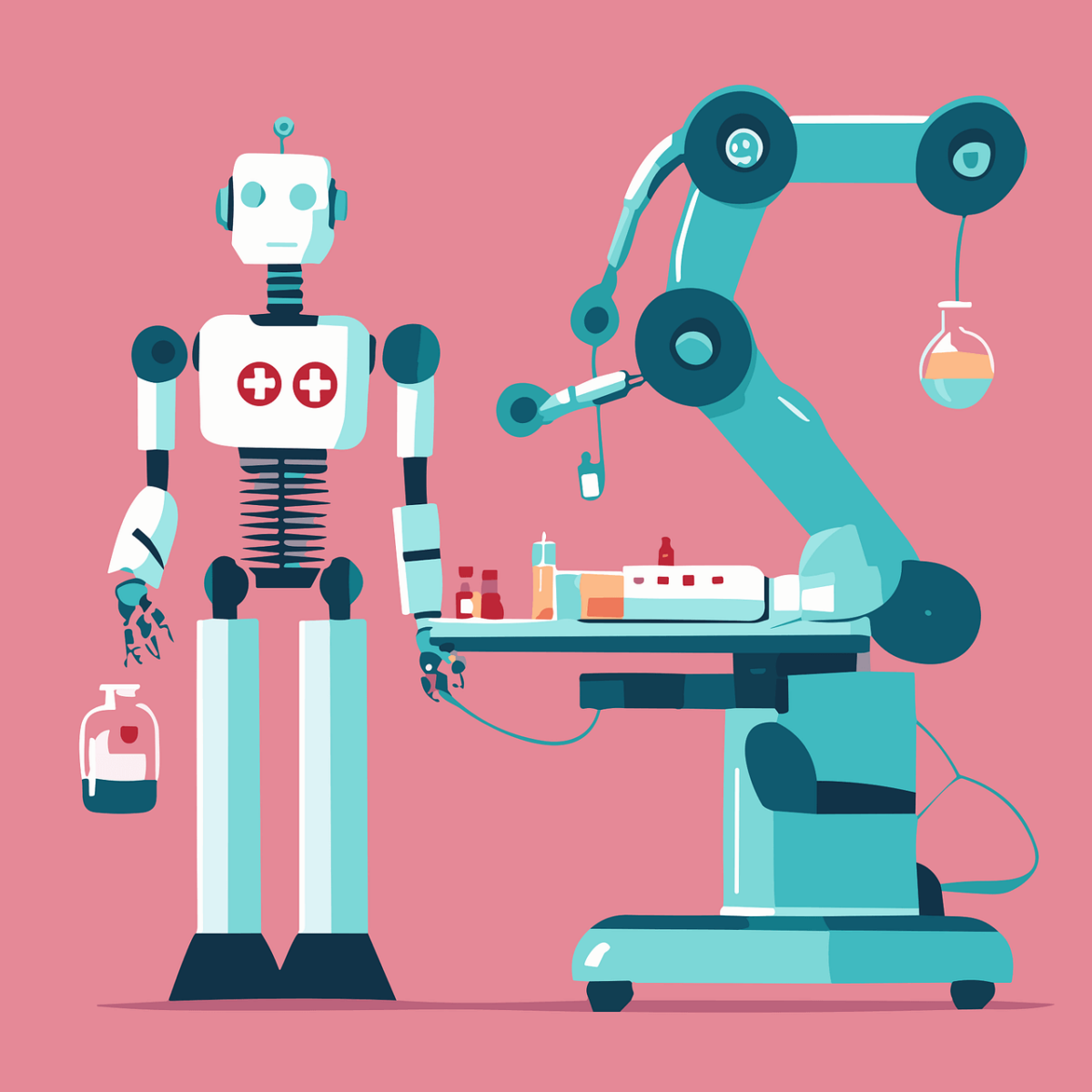Robotic surgery is a modern advancement in medicine that uses technology to assist in surgeries. However, many people still have misconceptions about it.
This article clears up these myths, providing clear and correct information about robotic surgery. We’ll explore common misunderstandings that both patients and healthcare professionals have, and show the real benefits of using robotic technology in surgeries.
Let’s look at the facts and learn the truth about this innovative surgical method.

Myth 1: Robotic surgery is performed by robots without human control
The reality: One widespread myth is that robotic surgery happens without any direct human control, as if the robots are making decisions on their own. In fact, this isn’t how it works at all. Here’s a clearer picture:
- Human guidance: Robotic surgery systems are sophisticated tools that assist surgeons during operations. They are not autonomous and do not operate independently.
- Surgeon’s role: The surgeon is in complete control of the robotic system at all times. The technology enhances the surgeon’s capabilities by providing greater precision but does not replace the surgeon’s expertise.
- Required oversight: Just like traditional surgery, robotic operations require the same level of human oversight and decision-making.
Practical example: Imagine a skilled artist using a high-tech brush that can paint with ultra-precision. The artist guides the brush, chooses the colors, and creates the artwork, but the brush helps to improve the quality of the strokes.
Similarly, in robotic surgery, the surgeon is the artist, and the robotic system is the high-tech brush, enhancing the surgeon’s ability to operate with greater precision.
Understanding the tools:
- What the robot does: Provides steady hands and detailed views.
- What the surgeon does: Plans the surgery, makes decisions, and controls the robotic system throughout the procedure.
Robotic surgery is a collaboration between human expertise and technological assistance, making complex surgeries more precise and less invasive. The surgeon’s role remains central and indispensable.
For more information on the technologies behind these advancements, check out our article on Robotic Surgery Technology.

Myth 2: The costs of robotic surgery are prohibitively high for average patients
The reality: It’s a common belief that robotic surgery is too expensive for most people, mainly because the equipment and setup costs are quite high.
However, when we look closer, the benefits of robotic surgery can outweigh these initial costs in several ways:
- Initial high costs: Robotic surgery equipment is costly to purchase and set up, but that’s just part of the story.
- Saving money in the long run: This technology leads to fewer surgical complications, which means less need for further treatments and surgeries. It also allows patients to recover quicker, shortening hospital stays and reducing costs.
- Decreasing costs over time: As robotic surgery becomes more common and technology advances, the costs are likely to decrease, making it accessible to more patients.
A UCLA study confirms that the long-term benefits of robotic surgery, such as fewer complications and faster recovery, outweigh the initial costs.
The key point here is that while robotic surgery might seem more expensive initially, the potential savings from reduced complications and quicker recoveries can make it a cost-effective option in the long run.
As technology improves and becomes more common, we can expect these surgeries to become more affordable for everyone.
Conclusion: Robotic surgery is not just about the upfront costs. It’s also about the benefits it brings in reducing the overall expenses related to surgical complications and recovery times.
As this technology becomes more widespread, it is likely to become a more economically feasible option for a broader range of patients. This not only enhances patient care but also improves the efficiency of healthcare delivery.
Myth 3: The applications of robotic surgery are limited and inflexible
The reality: There’s a common misconception that robotic surgery is only suitable for a few specific medical procedures. However, it is highly versatile and used across various medical fields, from delicate urological operations to complex cardiac procedures.
Robotic surgery offers unmatched precision and flexibility, reducing the risk of complications, minimizing tissue damage, and leading to faster patient recovery.
As technology and surgical techniques continue to advance, the capabilities of robotic systems expand, enabling their use in new and diverse surgical areas.
Surgeons trained on these systems improve their skills in complex surgeries, broadening the scope of robotic surgery even further. This continual evolution makes robotic surgery an increasingly valuable tool in modern medicine. Discover how online training is advancing these skills further in our Online Surgical Training article.
Practical example: For instance, in a prostatectomy, surgery to remove part or all of the prostate gland, using robotic surgery allows for incredibly precise movements. This precision is crucial because it minimizes the risk of damaging surrounding nerves and tissues, which can be a significant issue with traditional surgical methods.
Conclusion: Robotic surgery is not just a tool for a handful of procedures, it is a continually evolving technology that is becoming indispensable across many fields of surgery. Its ability to adapt to different surgical requirements and the ongoing improvements in technology make it a valuable asset in modern medicine, helping improve patient outcomes significantly.
Myth 4: Robotic surgery compromises the personal touch of surgeons
The Reality: Some people worry that using robots in surgery might make the patient experience feel less personal. However, this isn’t the case. The surgeon’s role is still central to each patient’s care, and robotic systems are just tools that they use to enhance their abilities.
Surgeon’s central role: Despite the use of advanced technology, the surgeon is always in control. Robotic surgery doesn’t replace the surgeon, it simply helps them perform at their best. Surgeons still make all the critical decisions and guide the robotic system throughout the procedure.
Enhanced patient connection: Far from depersonalizing care, robotic surgery can actually improve the surgeon-patient relationship:
- Precision and safety: The high precision of robotic surgery allows surgeons to perform complex procedures with less risk of complications, which leads to better outcomes and can enhance patient trust.
- Less invasive: Robotic surgeries are typically less invasive than traditional surgeries, leading to quicker recoveries and less pain. This can improve patient satisfaction and their overall experience.
Technological Benefits:
- Better visualization: Robotic systems provide surgeons with high-definition, 3D views of the surgical area, which surpass the human eye’s capabilities.
- Greater dexterity: Robotic arms can move in ways that human hands cannot, allowing surgeons to perform delicate procedures that would otherwise be extremely difficult or impossible.
Continuous presence: Even during robotic surgeries, surgeons remain by the patient’s side, managing the robotic systems and ensuring everything goes smoothly. This close monitoring maintains a high level of personalized care during the operation.
Conclusion: Robotic surgery does not reduce the personal touch of surgeons; instead, it enhances their ability to deliver safe, effective, and personalized care.
The technology allows surgeons to focus more on their patients’ specific needs by reducing the physical strain of surgery and minimizing risks, which ultimately benefits patient outcomes.
Myth 5: Robotic surgery results in longer recovery times
The Reality: Robotic surgery actually helps patients recover faster, not slower. UCL did a study that specifically highlights how robotic surgery for bladder cancer shortens recovery times significantly.
This type of surgery is minimally invasive, meaning it uses smaller cuts than traditional surgery. This leads to several benefits:
- Less pain: Smaller incisions cause less pain after surgery.
- Reduced risk of infection: Smaller openings reduce the chance of infections.
- Quicker recovery: Patients generally get back to their normal activities faster than with traditional surgery.
Practical example: Imagine someone having gallbladder surgery. With traditional surgery, they might have a large cut and a long recovery period. With robotic surgery, the incisions are tiny, the pain is less, and they might be able to go home the next day and return to normal life much quicker.
Conclusion: Robotic surgery does not extend recovery times; it reduces them, helping patients heal faster and with fewer complications. This is a crucial point for both patients and medical professionals to understand as they consider the benefits of advanced surgical technology.




